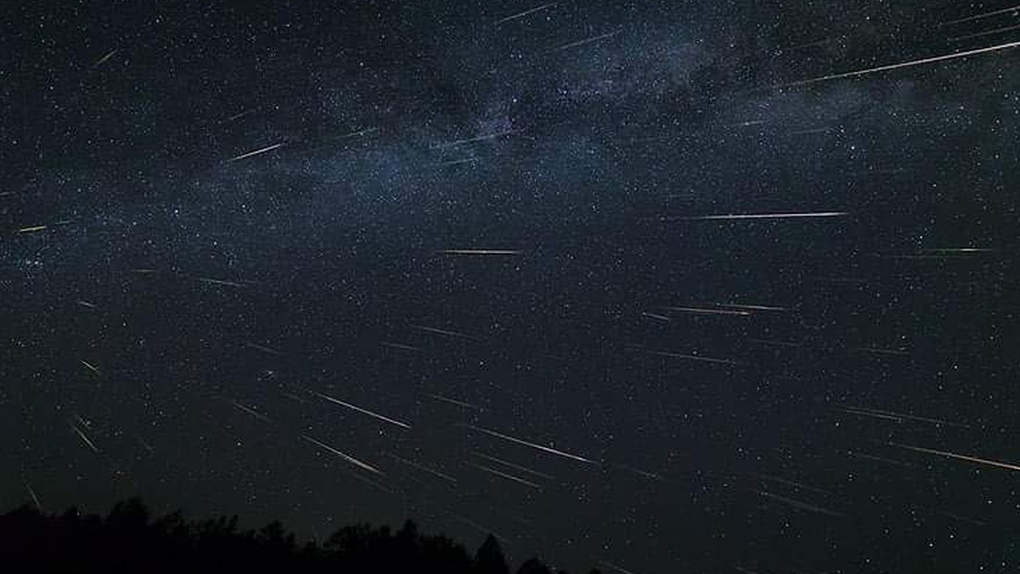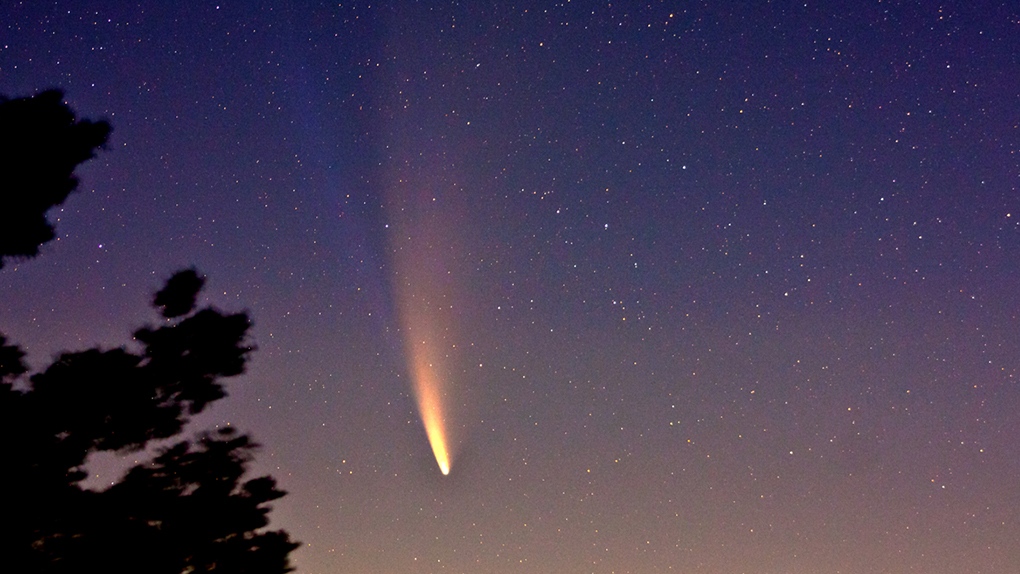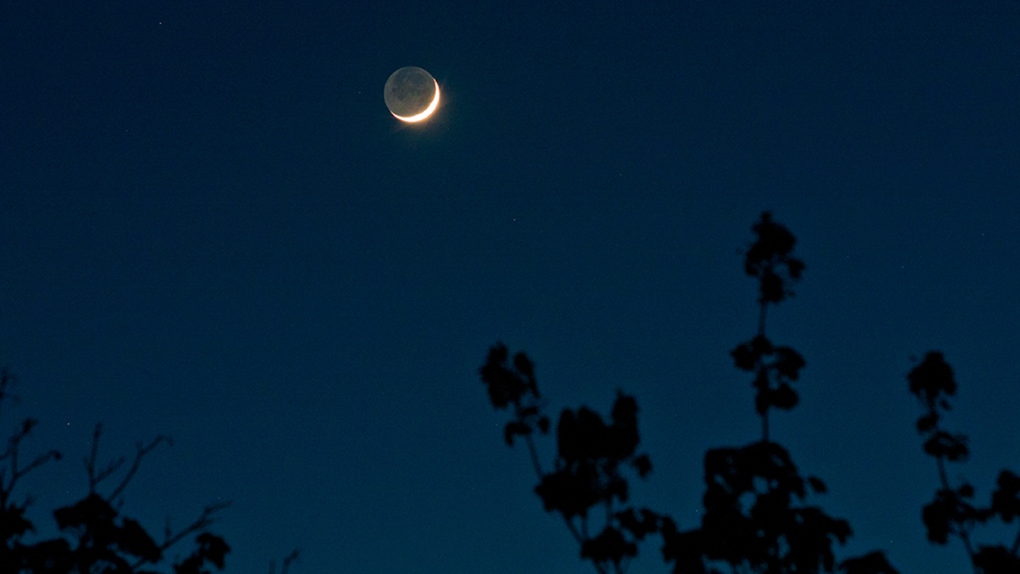The 'Backyard Astronomer' on enjoying the night sky and this week's meteor shower
Gary Boyle was starstruck at an early age.
“Living on the top floor of a triplex in Verdun, a suburb of Montreal, the night sky was my theatre.”
At the age of eight, he learned the constellations by looking at the pullout of a monthly astronomy magazine.
“I purchased my first telescope in 1968 and have never stopped. For the past 56 years, I have been in touch with the night sky and all it has to offer.”
Boyle has been so passionate about sharing his love of astronomy with others, the International Astronomical Union honoured the South Mountain, Ontario resident with the naming of Asteroid (22406) “Garyboyle”.
The astronomy educator, guest speaker and monthly columnist for the Royal Astronomical Society of Canada, who goes by the moniker “The Backyard Astronomer” has enjoyed seeing telescope sales soar during the pandemic.
He says you don’t have to invest thousands to become a stargazer though.
This week is the peak of the celestial show known as the Perseid Meteor Shower.
 Photo credit: Pierre Martin
Photo credit: Pierre Martin
“Over the past few weeks, you have probably noticed a few meteors or ‘shooting stars’ at night. You are witnessing one of the best meteor showers of the year,” says an enthusiastic Boyle.
The Perseid Meteor Shower began on July 14 and will last until Aug. 24 but this week is “the week” to make countless wishes upon those many stars.
“The best time to see 50 to 60 meteors per hour will be on the night of Aug. 11 and into the morning hours of the 12th,” explains Boyle.
The Backyard Astronomer says the night of the 13th should also be showy.
“This year, the crescent moon sets within a couple of hours after sunset leaving us with a dark sky. By contrast, next year’s Perseids takes place under a full moon, drastically reducing the hourly rate,” says Boyle.
The Perseids shower is an annual event.
Boyle explains, “As Earth plows through the dusty debris from Comet Swift-Tuttle, that last rounded the sun in 1992, in its 133-year orbit, as the comet approaches the sun, solar radiation causes the comet to glow.
“As we encounter the debris, particles strike the atmosphere at 59 km/second and completely burn up. The large pea-sized particles will create fireballs that can light up the ground.”
 Photo credit: Gary Boyle "The Backyard Astronomer"
Photo credit: Gary Boyle "The Backyard Astronomer"
Boyle says the viewing is best in the countryside away from any light source.
Along with Perseids, Boyle says brace yourself for the beauty of the Milky Way.
“Our galaxy has an estimated 300 billion stars. Using a grain of ordinary table salt to represent a star. You would have to fill a sandbox 20 feet by 20 feet, by one foot high to equal that amount of stars. There are an estimated two trillion stars in the observable universe.”
 Photo credit: Gary Boyle "The Backyard Astronomer"
Photo credit: Gary Boyle "The Backyard Astronomer"
The Backyard Astronomer’s Tips for Stargazing:
“With today's technology, many astronomy apps for smartphones can show the constellations and positions of the planets and other celestial objects,” Boyle says.
1) Start with the Big Dipper and learn the ones around that. Then use Cygnus the Swan and Orion the Hunter as a central starting point.
2) Purchase a set of binoculars (especially with children) to begin locating the position of the brighter star clusters and double stars.
3) If you are then ready to purchase a telescope, stay away from the big box stores. There are cheaply made telescopes with poor optics and wobbly mounts. This tends to discourage people from continuing. Shop online with reputable telescope dealers across Canada. Email me and I can offer suggestions. If you buy a $200 telescope, it will sit in the garage. $500 is the starting range.
4) Reach out to your closest astronomy club or centre. Here in town, we have the Ottawa Centre of the Royal Astronomical Society of Canada - link on my website.
5) Keep it fun and be patient. Astronomy will not come overnight (pardon the pun). There is a lot to learn and memorize but this is a fascinating hobby/science.
 Photo credit: Gary Boyle "The Backyard Astronomer"
Photo credit: Gary Boyle "The Backyard Astronomer"
While the technology has changed, making an understanding of the cosmos so much more accessible, Gary Boyle is nostalgic about his first introduction.
“Back in 1965 with an elementary school library book entitled 'STARS'. It was one of the seventy-odd subjects of the 'How and Why Wonder Series of Books'.”
That may just be a worthwhile yard sale find, although likely a lot more difficult than seeing a shooting star this week.
CTVNews.ca Top Stories

Ontario pitches energy partnership with U.S. amid Trump's tariff, Canada annexation threat
In the face of incoming U.S. president Donald Trump’s threat to acquire Canada and impose tariffs, Ontario Premier Doug Ford says he wants to expand its energy supply both sides of the border.
Mexico's President Sheinbaum offers sarcastic response to Trump's 'Gulf of America' comment
Mexico's President Claudia Sheinbaum responded sarcastically on Wednesday to U.S. president-elect Donald Trump's proposal to change the name of the Gulf of Mexico to the Gulf of America.
JetBlue passenger suddenly opens exit door as flight is taxiing for takeoff at Boston airport
A person on board a plane at Boston Logan International Airport that was taxiing for takeoff suddenly opened an exit door and was quickly restrained by other passengers, authorities said.
Canada among 'top 5 losers' in new passport ranking
A new global ranking may raise doubts about Canada's reputation of being open to other countries.
LIVE UPDATES Tracking the L.A. wildfires: 2 dead as major fires at 0% containment, locals describe 'terrifying' escape
A series of wildfires are searing through the Los Angeles area, forcing many to evacuate their homes. Follow along here for the latest updates.
Massive high-tech Canadian helicopter helps navy in hunt for submarines
Canadian warships on a mission to promote peace in the hotly-contested waters of the Indo-Pacific includes a highly-skilled specialized crew from the Royal Canadian Air Force.
Ricki's and cleo retail brands closing, Bootlegger restructuring
Several Canadian fashion retailers will be closing their doors after ownership company Comark Holdings announced it has filed for creditor protection.
Newborn babies at a Virginia hospital have been suffering mysterious injuries. A nurse now faces abuse charges
Parents may now be closer to understanding what happened at the hospital, which has reported a series of mysterious injuries to newborns over the past several years.
WATCH 'Like driving through hell itself': Apocalyptic scene on L.A. highway
Terrifying video shows a California resident’s drive along the Pacific Coast Highway in Los Angeles, as the Palisades wildfire engulfs buildings and homes.
































